Will somebody please think of the parked cars?
Thousands of sleeping vehicles are at risk every day. Fortunately, a simple solution is at hand.
Below is a set of photos of smashed cars I have seen across the city. These are all vehicles that were resting peaceably on the side of the road, waiting patiently for the return of their owners, harming no one. No person with even the smallest degree of empathy can look at these and think that our current world, where we place rows upon rows of parked cars right next to traffic lanes, is an ideal one, or one that should be tolerated. It’s clearly not safe.
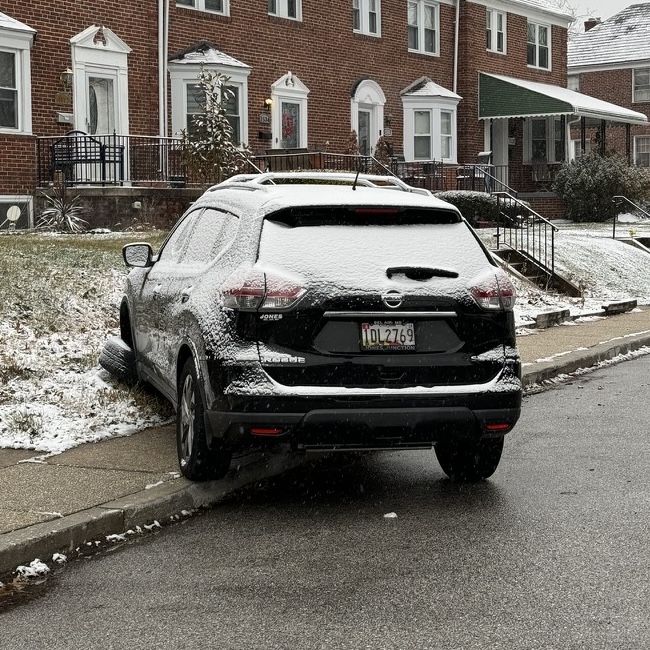
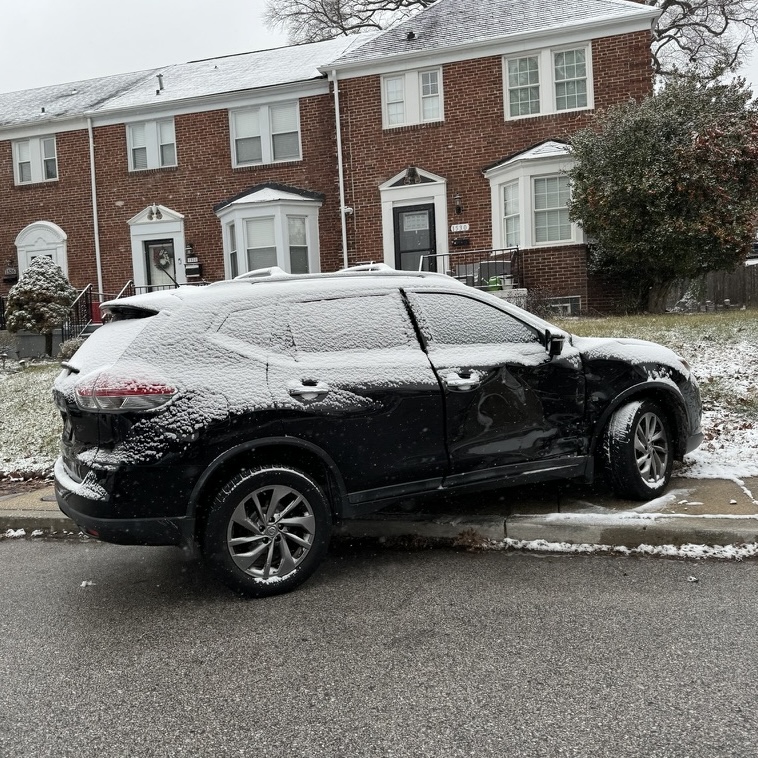
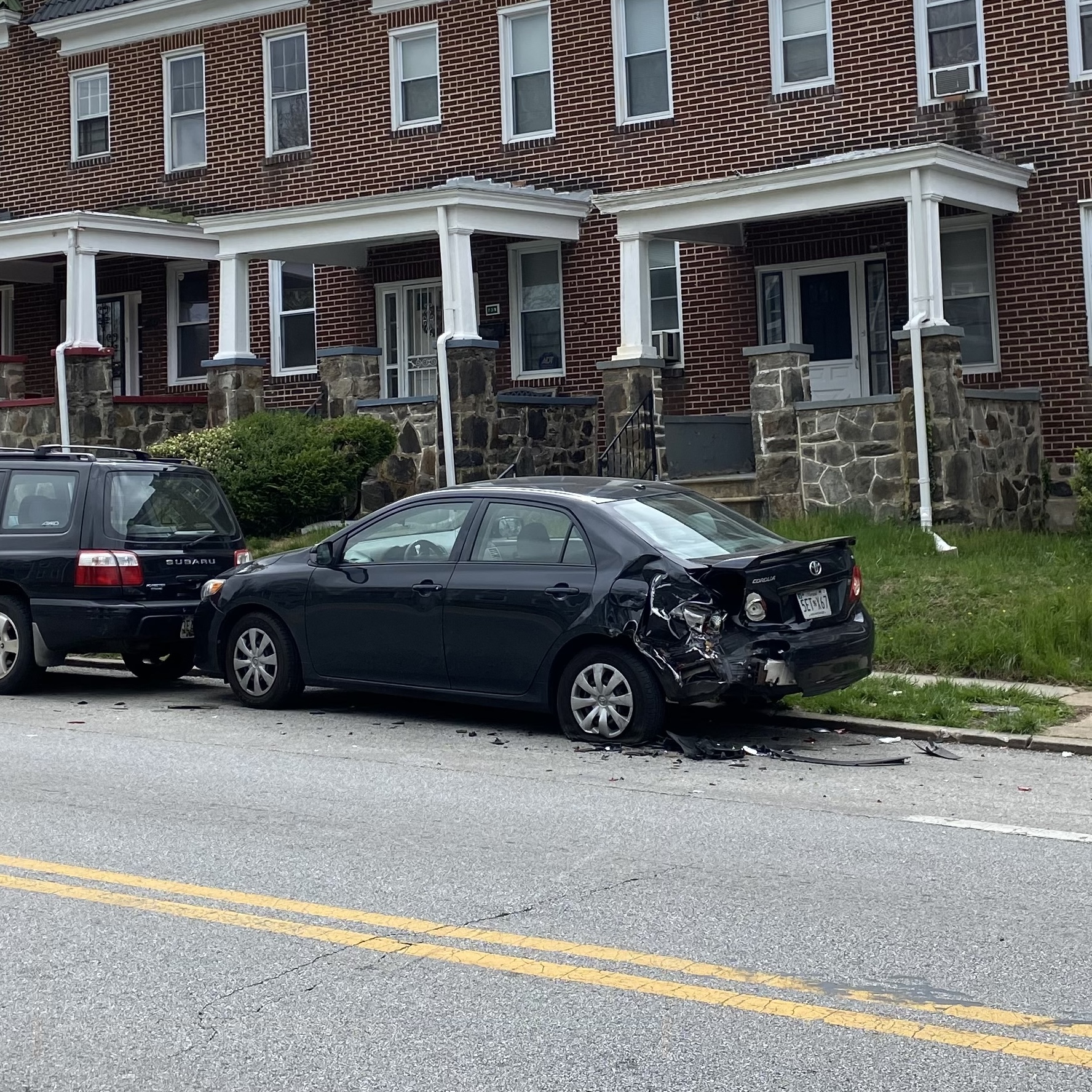
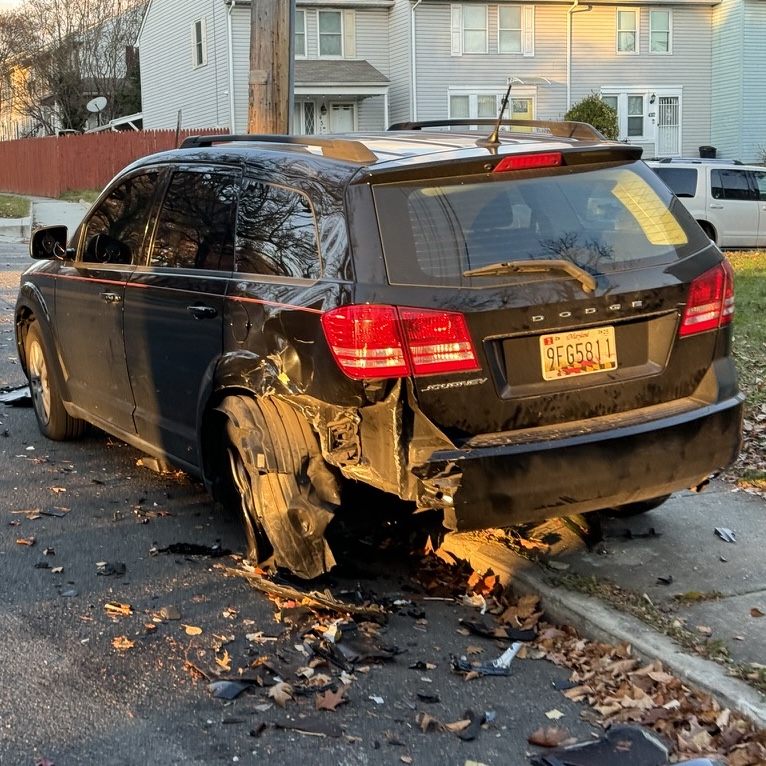
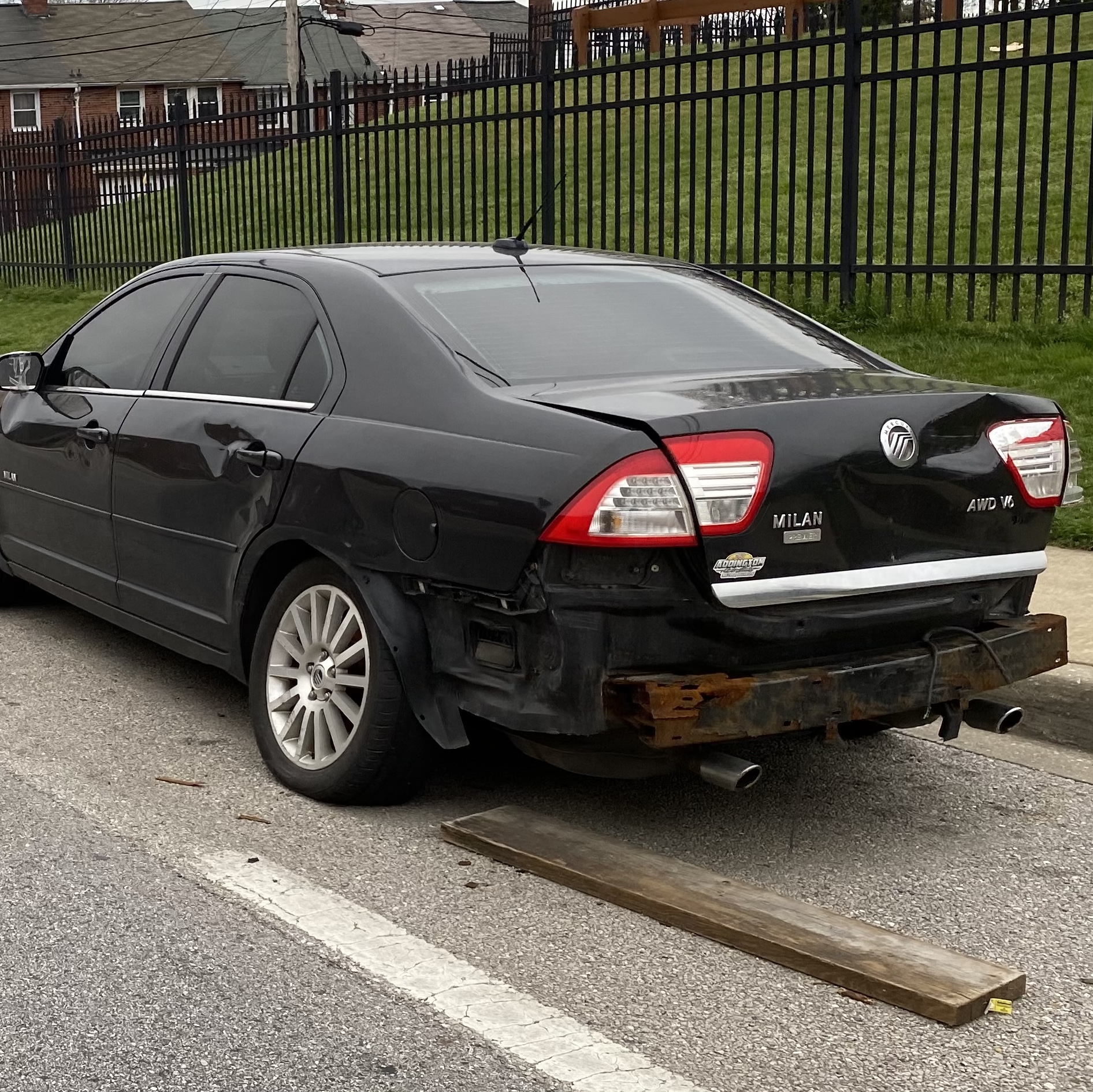
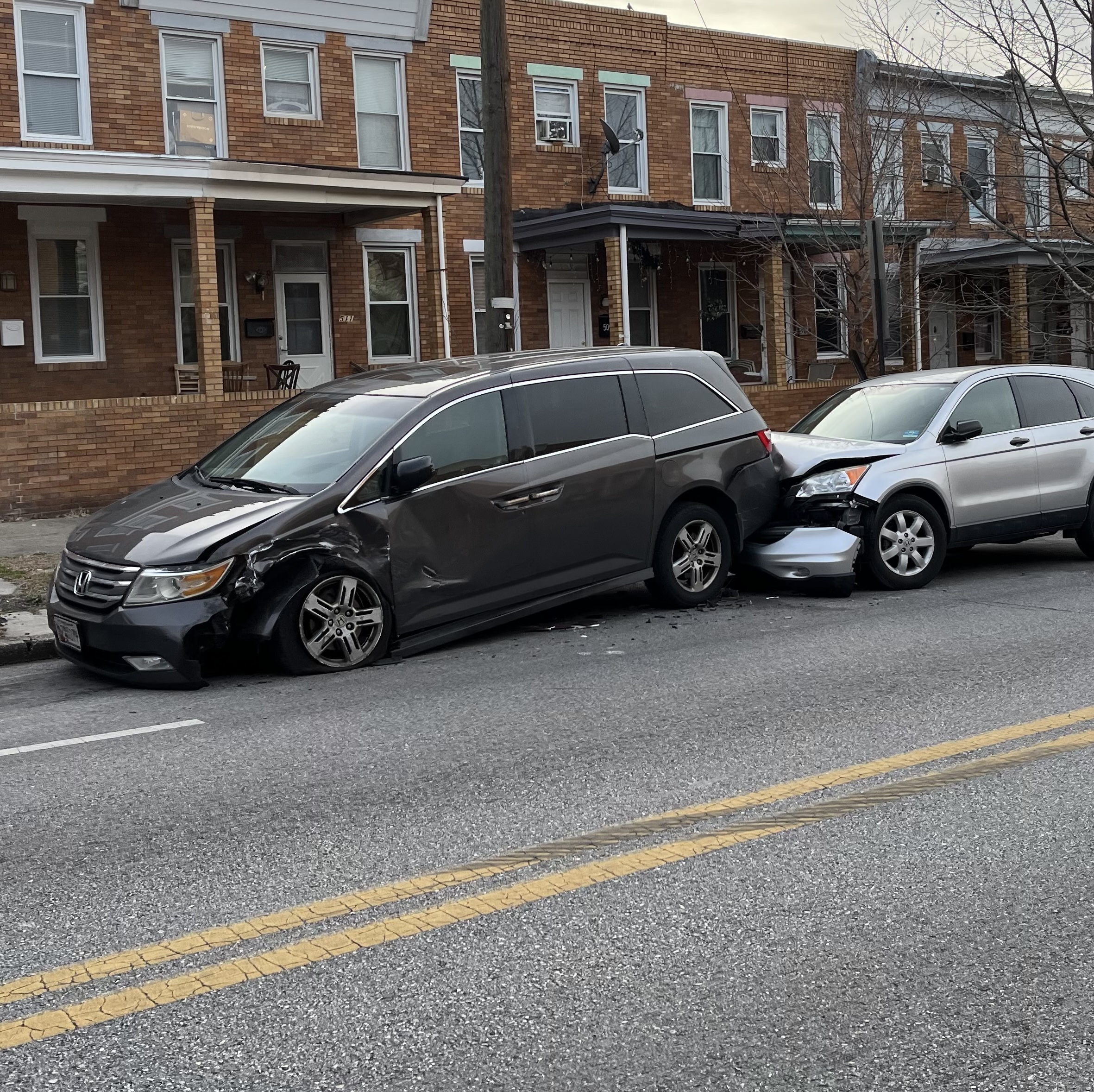
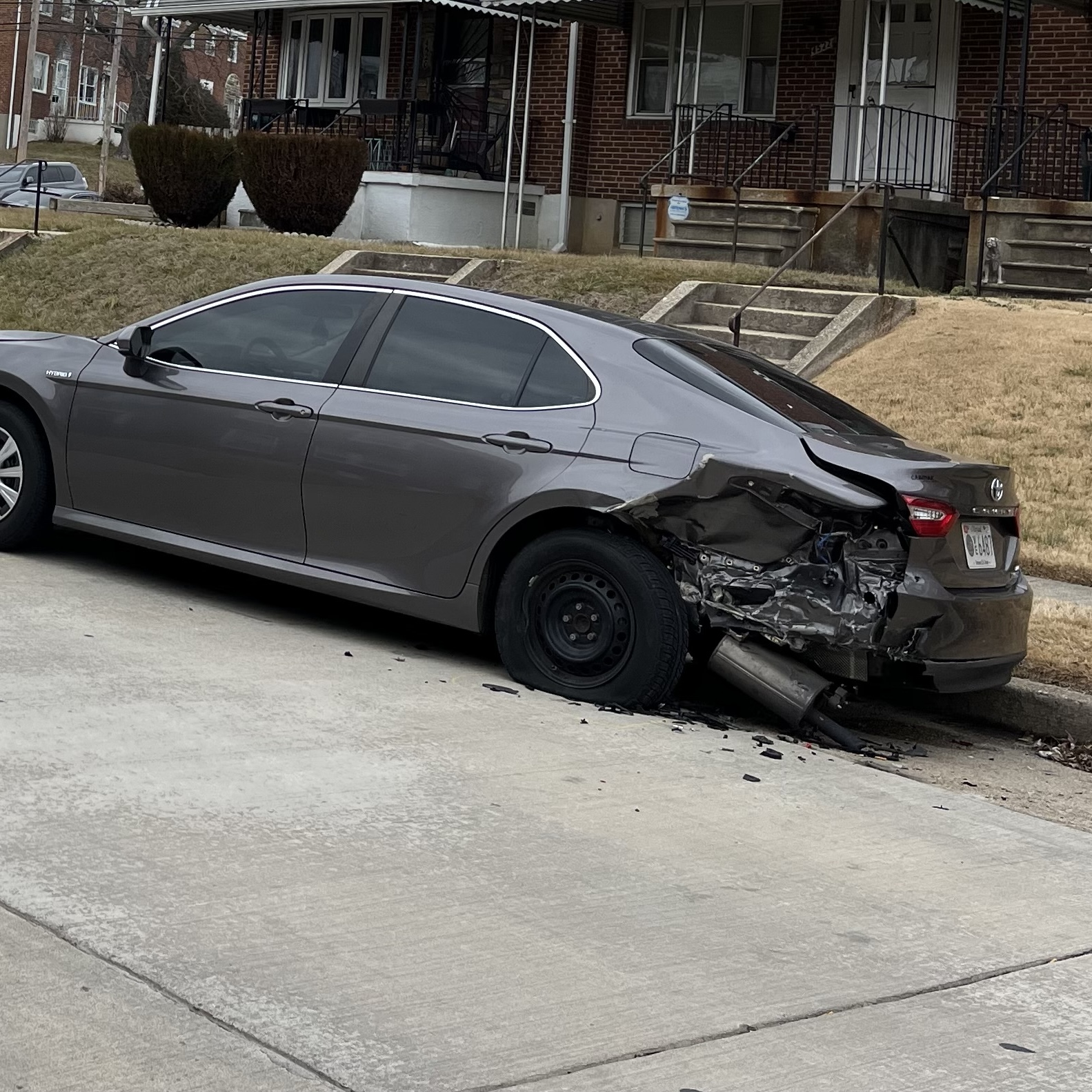
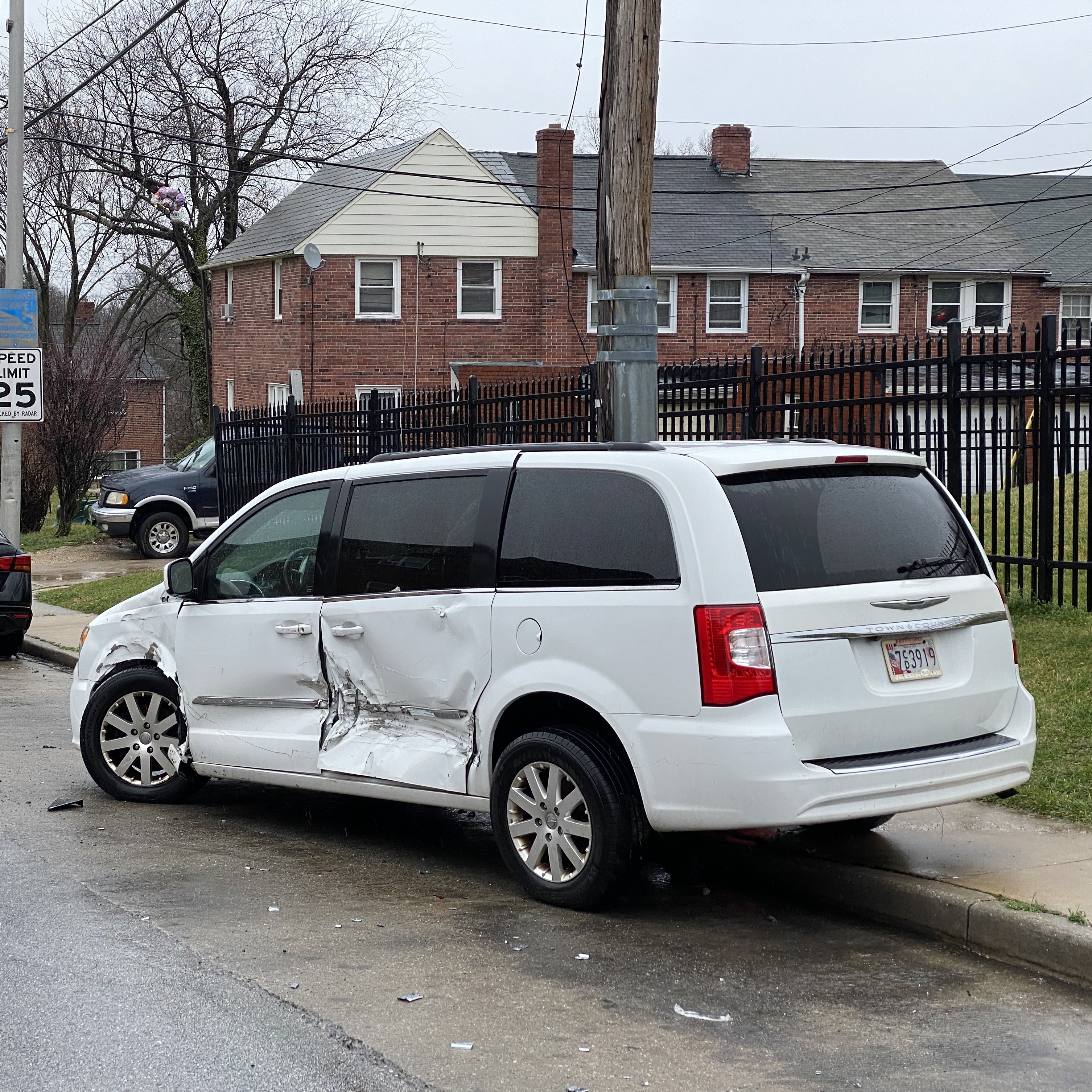
In my home city of Baltimore, instead of solving this problem, the city government, bound by a “Complete Streets” document, is putting in more and more bike lanes. At first thought, it’s hard to imagine how this is anything but a distraction from the important problem of moving vehicles smashing into stationary ones and driving off. But this is too dismissive. One of the “guiding principles” of Complete Streets is to “Address Safety First”. Clearly, our streets are not safe for parked cars. With a little bit of thought, we can see how bike lanes present a huge opportunity for shielding our citizens’ beloved parked cars from our citizens’ atrocious driving habits.
Before getting to the solution, let’s make sure we are all on the same page with some basic facts. A car is not just a possession that is created out of thin air, nor made in a moment of inflamed, fleeting passion, an act that is over and done with in just a few minutes. Building a car takes design, planning, consideration, and proper execution. A person does not accept delivery of some random vehicle, but instead makes a careful and deliberate choice of major features such as make and model as well as smaller aspects such as color and whether to install mud flaps.
And the moment that vehicle becomes one’s own, whether new or used pre-owned, the seeds of a deep, meaningful, and sentimental attachment are planted. That moment marks the beginning of a relationship that can span decades. It is therefore not surprising that people come to love their cars, to decorate them with special knick-knacks, and to spend good chunks of their weekends bathing and washing them. So deep does this relationship run that it is even common for people to give them names, such as “Roxie”, “The Silver Fox”, or “Brutus Ruth”. After hundreds of hours spent in grinding commuter traffic, these seeds sprout and develop into the strongest of ties.
There is nothing even remotely analogous to this intimate, meaning-laden relationship.
With this understanding in mind, it is clear that the status quo is not tenable. “Your [parked] car is insured”, someone might say. The response is obvious: even if you think you can put a “price” on a car, it’s not like they’re expendable or replaceable. Parts, especially for old ones that have woven their way into their car-parents’ lives, are often quite difficult to locate. There’s no guarantee that the shade of paint that so meaningfully defines a vehicle is going to match the replacement door panel your mechanic finally locates. And is your car—the 2002 Subaru Forester known to you and your spouse and children as “Betsy Travels”—the same car, when its door panel, scratched by a careless driver when parked too close to busy traffic, is replaced with a different shade of black? You can understand that some people might feel that the answer is a resounding “no”. It’s a distressing hypothetical.
Back to the question: what can bike lanes do for this problem? The answer is as simple as it is surprising: bike lanes, when properly designed, provide a suitable buffer zone between parked cars and traffic lanes. You can see a good example of this in the photos below.



In addition to the buffer zone created by the bike lane, the presence of cyclists—particularly small, jumpy children known for their erratic steering—catches the human eye, which is drawn to motion, momentarily tearing it away from his phone or radio dial or television, long enough to keep the vehicle safely within a foot or two of the lane boundary. A crisis is averted.
It’s worth noting, too, the wrong kind of lane: one in which the parked cars are situated between the traffic and cycle lanes. In fact, the lanes above (on Roland Ave) were once such lanes, until the city, in a moment of rare and admirable courage, reversed them. It is important to note that lanes designed in such a way are far from “complete”, given how little protection they provide to shoppers and homeowners, who have momentarily entrusted the city with the care of their dear automobiles.
So I say, let a thousand bike lanes bloom—as padding between our city’s motorists and the endless lanes of their parked cars. The extra space of the lane alone may prevent an untold number of scratches, dents, and worse, totalings. And once they are built, let there be a public service campaign to encourage cycling, in hopes of filling the lanes at all times of the day with cyclists of all ages. Their presence will catch the eye of drivers, reminding them of the important cargo resting only a few feet away. Failing that, their bodies themselves might serve as a useful lubricating cushion between plates of colliding steel, should the unspeakable—a moving vehicle jumping all the way over the bike lane and into an unsuspecting standing car—still occur.
In this way we might hope to stem the effects of the careless driving that causes so much damage each year to our precious possessions. I can’t think of any other way to accomplish this.